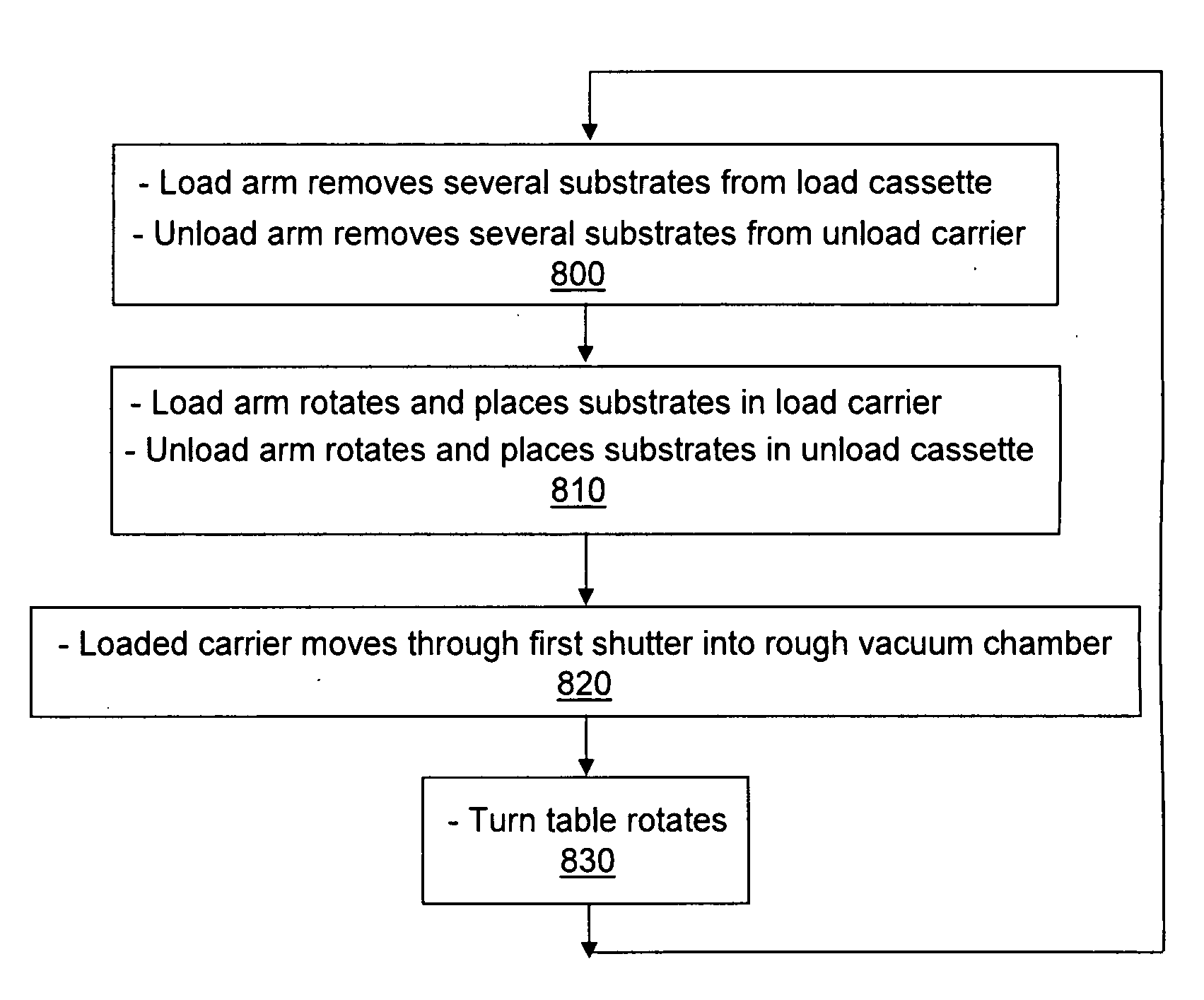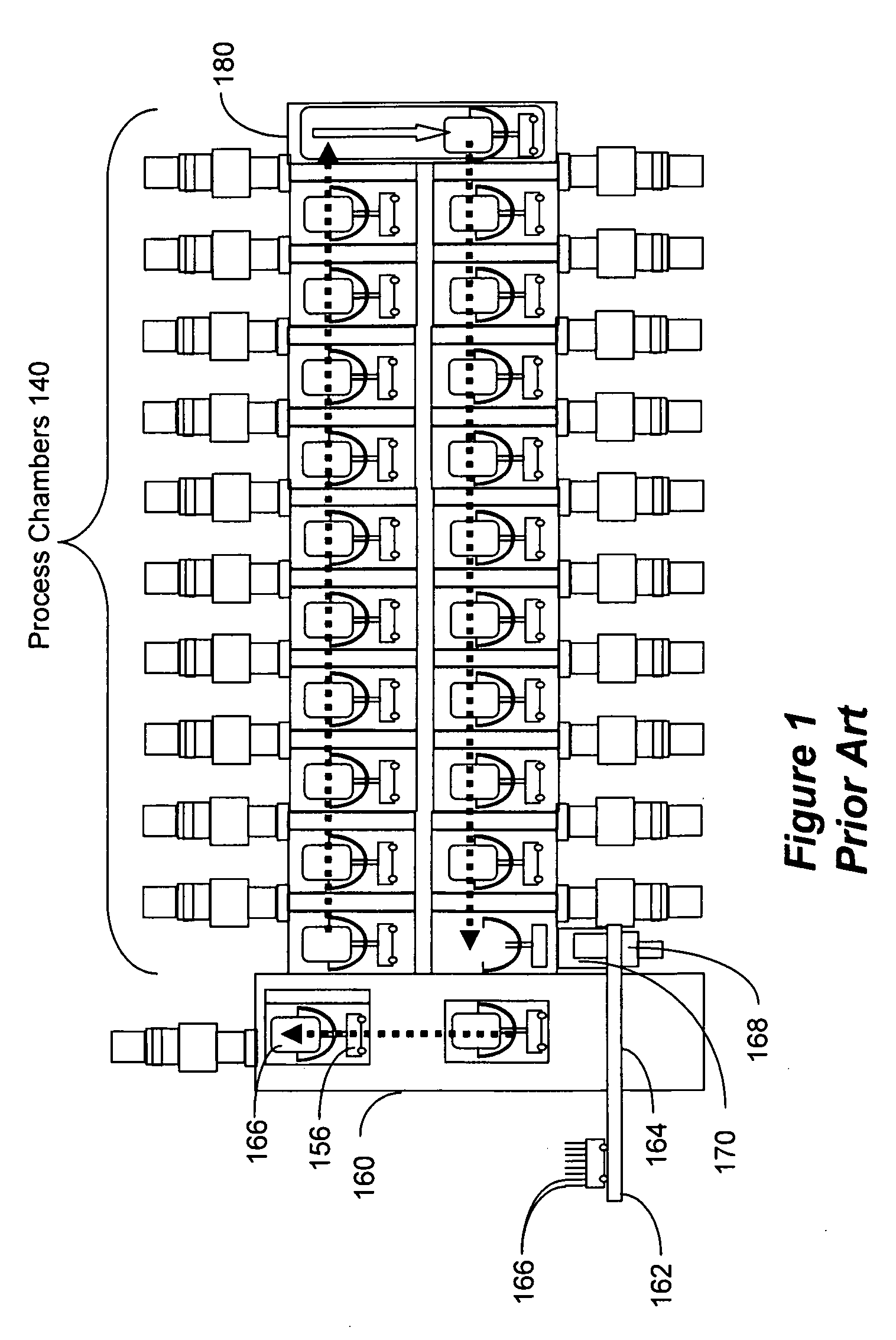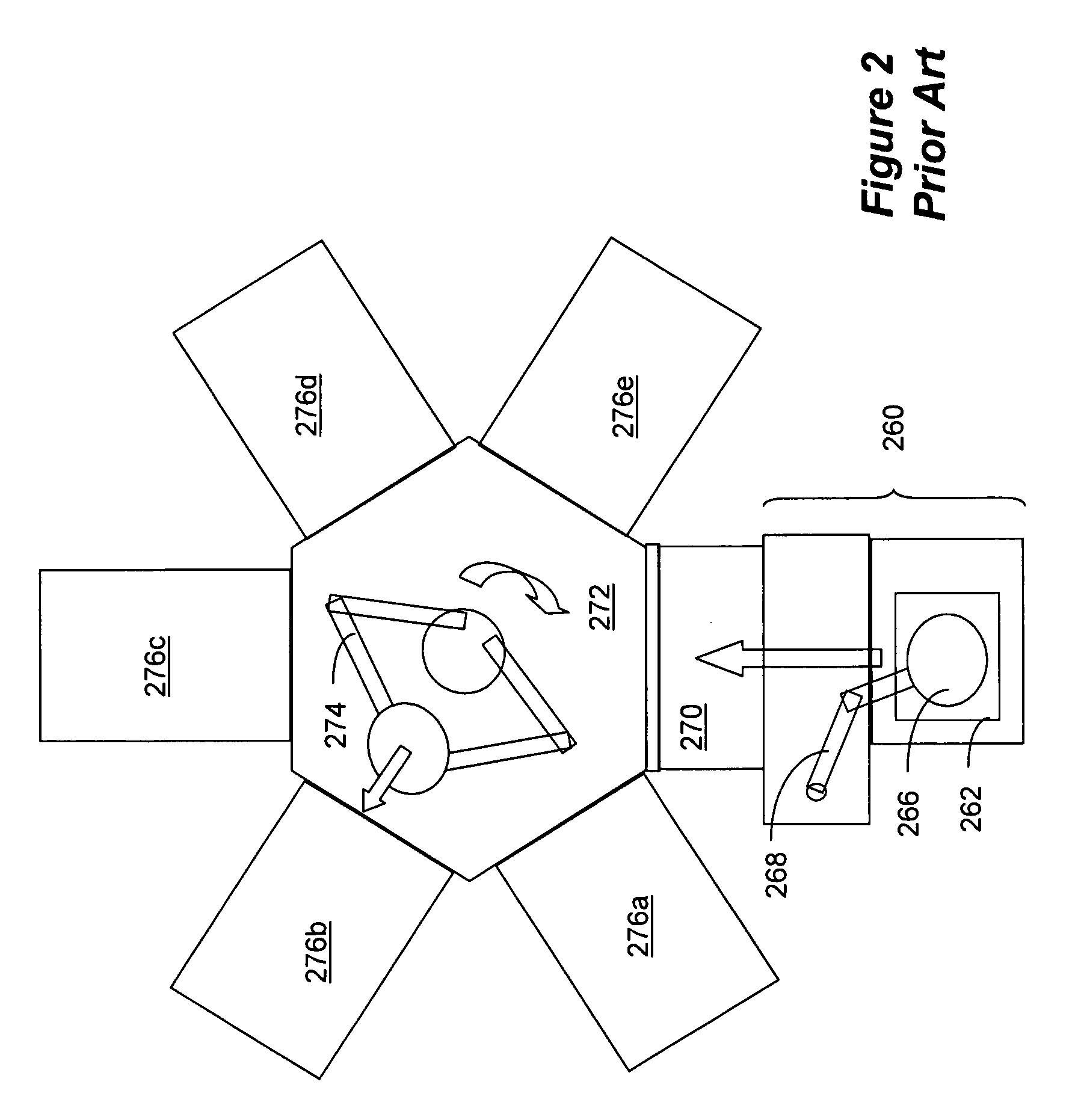System and method for substrate transport
- Summary
- Abstract
- Description
- Claims
- Application Information
AI Technical Summary
Benefits of technology
Problems solved by technology
Method used
Image
Examples
Embodiment Construction
[0024]A detailed description will now be given of embodiments of the invention for introducing substrates into vacuum environment of a substrate processing system. FIG. 3 is a simplified schematic illustrating a processing system in accordance with an embodiment of the invention. The system of FIG. 3 includes a plurality of processing chambers 340 arranged linearly and stacked one row above the other. A carrier elevator 380 is provided at the end of the stacked processing chambers. At the front of the stacked chambers are front end module 360 and substrate loading module 370. Front end module 360 has tracks 364 upon which cassettes 362 are transported in atmospheric environment, so as to deliver substrates 366 to the system. However, unlike the prior art system of FIG. 1, this embodiment further includes buffer module 390. Buffer module 390 includes a series of vacuum locks—here only two are shown, i.e., 392 and 394, but the number of vacuum locks can be changes as necessary. Multi-...
PUM
 Login to view more
Login to view more Abstract
Description
Claims
Application Information
 Login to view more
Login to view more - R&D Engineer
- R&D Manager
- IP Professional
- Industry Leading Data Capabilities
- Powerful AI technology
- Patent DNA Extraction
Browse by: Latest US Patents, China's latest patents, Technical Efficacy Thesaurus, Application Domain, Technology Topic.
© 2024 PatSnap. All rights reserved.Legal|Privacy policy|Modern Slavery Act Transparency Statement|Sitemap



